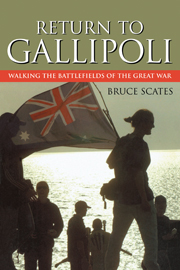Book contents
- Frontmatter
- Contents
- List of illustrations
- Note on money, measurement and terminology
- List of abbreviations
- Acknowledgments
- Introduction: journeys into history
- Part I Loss, Memory, Desire
- Part II Family Journeys
- Part III Soldiers' Tales
- Part IV Testament of Youth
- 7 Walking with history: learning about war
- 8 ‘It's like a Mecca, like a pilgrimage’: backpacker journeys
- Conclusion: journey's end
- Epilogue: The ghost of memory
- Notes
- Survey Informants
- Index
7 - Walking with history: learning about war
Published online by Cambridge University Press: 22 September 2009
- Frontmatter
- Contents
- List of illustrations
- Note on money, measurement and terminology
- List of abbreviations
- Acknowledgments
- Introduction: journeys into history
- Part I Loss, Memory, Desire
- Part II Family Journeys
- Part III Soldiers' Tales
- Part IV Testament of Youth
- 7 Walking with history: learning about war
- 8 ‘It's like a Mecca, like a pilgrimage’: backpacker journeys
- Conclusion: journey's end
- Epilogue: The ghost of memory
- Notes
- Survey Informants
- Index
Summary
In the weeks approaching Anzac Day, Brisbane's Courier Mail, like most of Australia's mass media, takes to thinking about history. Year in, year out, there is little variation; the heroic story of the landing is relived, retold, reinvigorated. But in 2002 a reporter from the Courier found the ‘human interest’ angle every journalist dreams of, a potent combination of children, war, family history and regional focus: a pilgrimage from Mackay North State High School to Gallipoli, the Somme and Flanders.
In a column entitled ‘Students Have Their Say’, Dave and Erika (both seventeen) were asked why they were setting out on this ‘journey to find our Anzacs’. With five years service in the Cadets, proud of his country and ‘mad keen’ on history, Dave couched his response in terms of national identity: ‘Gallipoli is a place I've learnt about since primary school. To me, it's the Australian Mecca, a place where we can reflect upon ourselves and what it means to be Australian. The landing was a defining moment in our nationhood.’ Erika defined her journey in a much more tentative way; her language is far more intimate, her pilgrimage far more personal and her sense of history centred on self and family: ‘My great-great uncle was killed at Gallipoli when he was only eighteen, one year older than I am today. I can't imagine what drove him to offer his life so willingly. [I'll] visit the place where he died. Maybe then I will understand’.
- Type
- Chapter
- Information
- Return to GallipoliWalking the Battlefields of the Great War, pp. 173 - 187Publisher: Cambridge University PressPrint publication year: 2006



